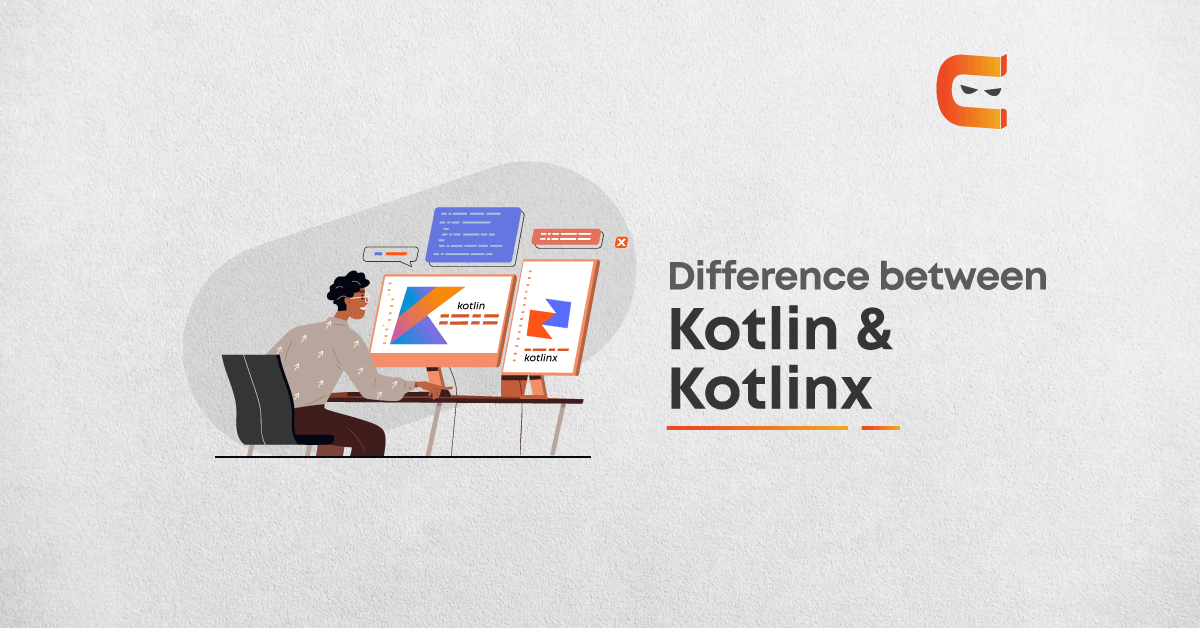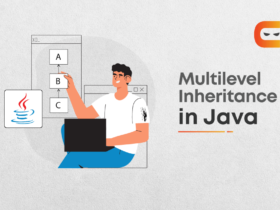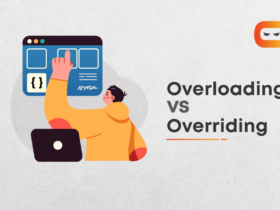Kotlin is a statically-typed, cross-platform, multi-purpose programming language with type inference. It was designed by the Jet Brains to allow developers to create cross-platform applications on the Android Studio, as the transfer from Java classes to Kotlin classes had to be completely smooth.
Therefore, it is designed to interoperate fully with Java. The type of inference allows the syntax of Kotlin to be more concise. Still, the JVM version of Kotlin’s standard library is dependent on the Java Class Library. Though Kotlin is highly scalable and readable as a language, still it provides a few minimal low-level APIs in its standard library to invoke several other libraries for coroutine utilization.
In contrast to the other type inference programming languages with similar capabilities, the async and await keywords are not included in the standard library of Kotlin. Furthermore, Kotlin provides a much safer and secure for asynchronous operations than other future promises, because of its suspending function.
Read about the 5 Best server-side Kotlin frameworks now.
Table of Contents
Top features of Kotlin:
1. It is an open-source programming language
The makers of IntelliJ IDE-Jet brains were the ones who designed Kotlin also. It takes a very less effort to convert a Java code into Kotlin. In fact, the Android studio comes with a default, single-click, and set-up for converting Java codes into Kotlin.
2. Complete Java Interoperability
Kotlin is very deeply interoperable with Java; this becomes very inviting for the Java Developers. On top of this, it is backwards compatibility with Java versions 6 and 7.Kotlin codes can even run on the Java Virtual Machine and use its libraries and tools.
3. Defaulted parameters
Kotlin allows developers to pass the arguments by name, rather than index. This comes in more handy, especially if the has too many optional parameters.
4. Kotlin compiles to JVM bytecode or JS
Java and JavaScript developers are increasingly switching towards Kotlin as Kotlin compiles to JVM byte code or JavaScript. In addition to this, the programmers who use a garbage-collected runtime are also learning Kotlin.
5. Data Classes in Kotlin
The features and scope of the default classes are fully exploited by the programming language designers. Usually, typical Java data classes contained stacks of boilerplate code. Developers usually had no idea about their usage and space requirements. But fortunately, Kotlin allows us to write an equivalent Java code in a very simplified form and reduces the lines of code, and the space complexity further.
6. Eliminates Null pointer exception
The main aim of Kotlin programming language’s type system is to eliminate the most frequent error of the Android SDK, that is, Null pointer exception. This error is often regarded as The Billion Dollar Mistake, as often developers tend to forget the assignment or use an incorrect spelling, this leads to an instant app crash. While in Java, if you try to access a member of null reference it will result in a null reference exception.
7. Eradicates the runtime overheads
The standard Kotlin library is very concise, it doesn’t contain any unused functionalities, and it is brief and scalable. Only the focused extensions from the Java library are placed in the Kotlin standard library. Most of the functions are inline; this reduces the runtime expenses significantly. Kotlin is highly optimized, specifically, for supporting Android development.
8. Provides extension functions
The extension functions allow the users to add methods to classes, without adding any changes to the source code. You can modify the pre-existing functions to the default classes and increase their functionalities and scope. These allow specialization of the general default functions, for adding product-based services according to the client’s requirements.
9. Analogous to Swift
Swift is one of the most popular languages for ios development, so in case you are planning to become a cross-platform developer, you must learn either Swift or Kotlin. By learning one of these, you can easily adapt to the other.
10. Reduces LOC
The Kotlin compiler is a smart compiler, as you need to declare or type everything explicitly. The best-suited example is that you need to mention data types while declaring variables. The Kotlin compiler automatically infers type in variable declarations at the compile time. This increases the productivity of developers and saves time, by reducing the chances of errors.
Read about the Shrinking Kotlin libraries & apps using Reflection with R8
What are kotlinx.coroutines?
Kotlin 1.1 was the first language to come up with coroutines. It is the contemporary method for creating asynchronous, non-blocking codes and many more.
kotlinx.coroutines is a dense library for including coroutines in your project. It was developed by JetBrains. The kotlinx.coroutines library is a set of helpers and wrappers for the pre-existing Java libraries. A significant number of high-level coroutine-enabled primitives include launch, async is present in Kotlin. First, you need to include any of the libraries mentioned-below for adding coroutine support in your project.
Inclusion
In order to use kotlinx.coroutines you need to add a dependency on the kotlinx-coroutines-core module. Depending upon the language use, it varies. Use the libraries mentioned-below:
- Gradle:
You can use kotlinx-io, with gradle.
Artifacts live in jcenter:
repositories {
jcenter()
}
2. Common:
dependencies {
implementation("org.jetbrains.kotlinx:kotlinx-io-common:$kotlinx_io_version")
}
3. JVM:
dependencies {
implementation("org.jetbrains.kotlinx:kotlinx-io-jvm:$kotlinx_io_version") }
4. JavaScript:
dependencies {
implementation("org.jetbrains.kotlinx:kotlinx-io-js:$kotlinx_io_version") }
5. Native:
dependencies {
implementation("org.jetbrains.kotlinx:kotlinx-io-native:$kotlinx_io_version")
}
6. Maven:

7. Gradle Kotlin DSL:
dependencies {
implementation("org.jetbrains.kotlinx:kotlinx-coroutines-core:1.4.0")
}
And make sure that you use the latest Kotlin version:
plugins {
kotlin("jvm") version "1.4.0"
}
Please ensure that you have added either jcenter() or mavenCentral() in the list of repositorie
Building your first Coroutine:
Coroutines can be simply referred as a light-weight thread. Analogous to threads, they also run parallel, co-ordinate with other coroutines, and wait for communication signals from one another. The most significant difference between a coroutine and a thread is that, the earlier ones are too cheap, while the later ones are expensive to invoke and store. A programmer can create thousands of coroutines, without affecting the performance of the system. Whereas a thousand threads will definitely interfere with the working of a modern machine.
A coroutine is triggered with the help of a launch {} function:
launch {
…
}
The launch function initiates a coroutine. By default, coroutines are run on a shared bucket of threads. Threads are still required in programs that are driven by coroutines. However, a single thread can be used for running multiple coroutines. Hence, only a few threads are required in a Kotlin coroutine based program.
The following Java code snippet uses launch:
println("Start")
// Launching a Coroutine:
GlobalScope.launch {
delay(1000)
println("Hello")
}
Thread.sleep(2000) // wait for 2 seconds
println("Stop")
Output: The above coroutine waits for 1 second and then prints Hello.
Target platform: JVMRunning on kotlin v. 1.4.10
We use the delay() function which is analogous to Thread.sleep() function, but it is better. As it never blocks a thread, rather it suspends the coroutine itself. The thread is reverted to the pool while the coroutine is still waiting. As soon as the waiting time is over, the coroutine resumes back on any unoccupied thread in the pool.
The main thread waits until the execution of the coroutine is completed, else the program terminates even before Hello is printed.
SERIALISING & DESERIALISING OBJECTS WITH KOTLINX.SERIALISATION
Serialisation is a task which is very frequently encountered in Agile-based software projects. The Android or web developers prefer APIs that return JSON as a plain-text format for objects. Server-side applications and backend services often accept and respond to JSON formatted requests.
Opting for kotlinx.serialisation makes the entire process well aligned:
After adding the library to your project, turn an elementary Kotlin object into the corresponding JSON representation and reverse it. This is as easy as assigning its class with the @Serialisable annotation, and employing the given encodeToString and decodeFromString extension functions on the JSON object.
The code snippet given below represents a basic serialisation code:
import kotlinx.serialisation.*
import kotlinx.serialisation.json.*
@Serialisable
data class User(val name: String, val yearOfBirth: Int)
fun main() {
// Serialisation (Kotlin object to JSON string)
val data = User("Louis", 1901)
val string = Json.encodeToString(data)
println(string) // {"name":"Louis","yearOfBirth":1901}
// Deserialisation (JSON string to Kotlin object)
val obj = Json.decodeFromString(string)
println(obj) // User(name=Louis, yearOfBirth=1901)
}
As the popularity of Apple iPhones increased significantly in the last few years, the Android Studio became less popular in comparison to swift or other ios development programming languages.
Many cross-platform frameworks such as Ionic, Cordova, React, Node.js, etc. gained popularity and developers start switching to them. Kotlin saved the Android Studio community from diminishing by allowing cross-platform development.
Being analogous to Swift and Python, Kotlin attracted more developers and enlarged the Android Studio Developers’ community. At the same time increased the bandwidth of the client-base, as the projects became more scalable and less error-prone.
Kotlin is a highly reliable programming language as it comes from Google.
Further, Kotlinx provides extensive coroutines to increase the efficiency of the language more. Kotlinx coroutines can be simply inherited by including a library.
Hence, this implies that by just adding a compact library, you can add too many advanced features and classes to your project.
By Vanshika Singolia















the main difference between threads and coroutines is the coroutines run on a thread and many coroutines can run on a single thread.